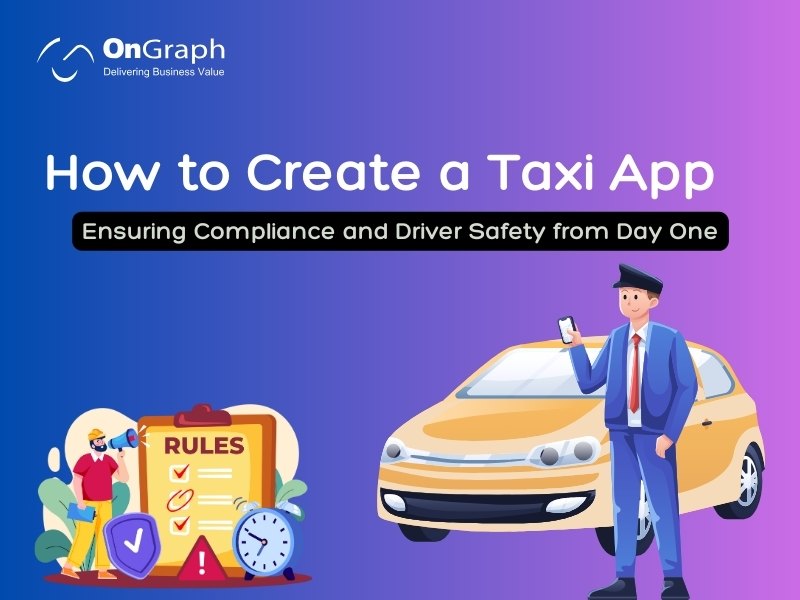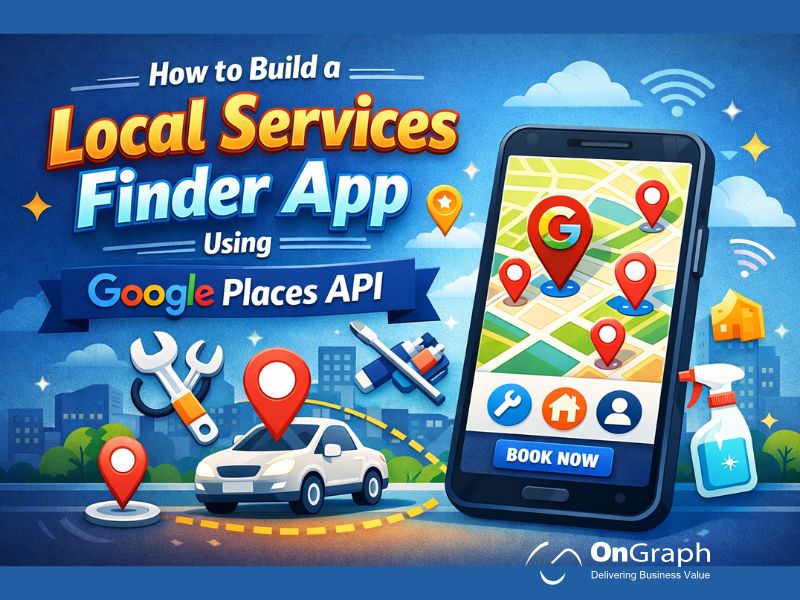In this article
- The Evolution of Taxi Apps
- Why Compliance Matters in Taxi App Development?
- Driver Safety Features: Building Trust from Day One
- Core Taxi App Features Every Platform Needs
- Taxi App Deployment Challenges and How to Overcome Them
- Role of a Taxi App Development Company
- Case Example: Ensuring Compliance in Practice
- Conclusion
The global ride-hailing industry is booming, with revenues expected to reach $395 billion by 2027 (Statista). With this rapid growth comes both opportunity and responsibility. If you want to create a taxi app, you need more than just advanced technology and a sleek design—you must prioritize compliance, driver safety, and trust from the very beginning.
This article explores the evolution of taxi apps, essential taxi app features, and the critical steps to ensure your platform meets regulatory standards and safeguards both riders and drivers.
The Evolution of Taxi Apps
Taxi services have come a long way from traditional phone bookings and street hailing. Today, platforms like Uber, Lyft, and Bolt dominate the market, thanks to user-friendly apps and real-time GPS tracking.
However, with growth has come challenges—concerns about rider safety, unverified drivers, and compliance gaps. These issues highlight why ride-hailing app compliance and strong driver safety features must be built into the app’s foundation.
Why Compliance Matters in Taxi App Development
Regulations around ride-hailing vary by country, state, and even city. Non-compliance can lead to heavy fines, suspension, or complete bans. For example, London temporarily banned Uber in 2019 for safety lapses, costing the company millions.
Key compliance areas for taxi app development include:
- Licensing and permits: Ensuring drivers and vehicles meet local regulations.
- Insurance integration: Providing coverage for accidents and liability.
- Data protection: Meeting GDPR, CCPA, or local privacy laws.
- Payment compliance: Following rules around digital transactions and taxes.
By aligning your app with these standards, you avoid legal risks and build credibility.
Driver Safety Features: Building Trust from Day One
Trust is the backbone of any successful ride-hailing platform. Without it, riders won’t book trips and drivers won’t join. That’s why integrating driver safety features from the start is essential.
Must-Have Driver Safety Features in Taxi Apps:
1- Background checks for drivers – Conduct identity verification, criminal record checks, and driving history reviews.
2- Driver screening process – Collect and validate documents like licenses, IDs, and vehicle registration.
3- In-app emergency button – Allow riders and drivers to alert authorities or support teams instantly.
4- Real-time GPS tracking – Monitor rides to prevent unsafe detours and provide emergency support.
5- Two-way ratings and reviews – Create accountability by letting riders and drivers rate each other.
6- Driver fatigue monitoring (optional) – Advanced apps now use telematics to track driver behavior.
Case Study: In India, ride-hailing companies were mandated to add panic buttons and GPS tracking after reports of safety incidents. This regulation not only improved safety but also boosted user trust.
Core Taxi App Features Every Platform Needs
To compete in today’s market, your app must include features for all stakeholders—riders, drivers, and admins.
Rider Features:
- Simple sign-up and booking process
- Fare estimates before ride confirmation
- Multiple payment options (card, wallet, cash)
- Ride tracking and ETA updates
- Loyalty rewards and promo codes
Driver Features:
- Easy registration and onboarding with document upload
- Ride acceptance/rejection with optimized route guidance
- Earnings dashboard and payment tracking
- Safety toolkit with SOS button
Admin Features:
- Driver verification and approval system
- Real-time ride monitoring and analytics
- Fare and commission management
- Complaint and dispute resolution tools
Taxi App Deployment Challenges and How to Overcome Them
Launching a taxi app is not without hurdles. Here are some common taxi app deployment challenges:
- Regulatory barriers – Every region has unique licensing and operational laws.
Solution: Partner with legal experts in each target market before launch.
- Driver onboarding delays – Manual verification can slow down driver recruitment.
Solution: Automate the driver screening process with digital verification tools.
- High competition – Competing with global giants can feel daunting.
Solutions: Focus on niche markets (e.g., eco-friendly taxis, women-only rides).
- Payment gateway integration – Limited local options may restrict digital payments.
Solution: Research regional gateways (like PayU, Flutterwave, or M-Pesa) alongside global ones.
- User adoption – Convincing riders to switch from established apps is tough.
Solution: Offer introductory discounts, loyalty points, and referral bonuses.
Role of a Taxi App Development Company
To successfully create a taxi app that is secure and compliant requires specialized expertise. A professional taxi app development company can help with:
- Custom solutions: Tailoring features to local regulations and market needs.
- Scalability: Designing the system to handle thousands of concurrent rides.
- Integration: Adding third-party services like insurance, payment gateways, or geofencing.
- Ongoing support: Ensuring regular updates and compliance with evolving laws.
By choosing the right technology partner, you can speed up your journey to market while ensuring compliance and driver safety.
Build a Fully Compliant Taxi App from Day One.
Navigate complex regulations with ease and ensure rider & driver safety from the start. Let us handle the compliance, so you can focus on growing your business.
Case Example: Ensuring Compliance in Practice
A ride-hailing startup in South Africa faced challenges with unverified drivers and safety concerns. By implementing:
- Background checks for drivers
- Automated driver screening process
- Insurance integration for every ride
They built a safer ecosystem. Within six months, the company grew its rider base by 40%, proving that compliance and safety directly drive adoption and growth.
Conclusion
If you plan to create a taxi app, prioritizing ride-hailing app compliance and driver safety features is non-negotiable. From robust background checks for drivers to smart taxi app features like emergency buttons and GPS tracking, safety builds the trust your platform needs to succeed.
Working with an experienced taxi app development company ensures that you overcome taxi app deployment challenges while staying ahead in a competitive market. By focusing on compliance and driver safety from day one, you not only protect your business but also earn the loyalty of riders and drivers alike.
FAQs
The development timeline depends on the complexity of features. A basic MVP can take 3–4 months, while a full-featured app with advanced integrations (like loyalty programs, geofencing, and custom driver safety features) may take 6–9 months.
Key taxi app features include rider registration, real-time GPS tracking, fare estimation, multiple payment options, driver onboarding, ride history, loyalty programs, and admin dashboards for managing rides, drivers, and payments. Safety features like SOS buttons and live ride tracking are also critical.
Driver safety is ensured through a driver screening process, including background checks for drivers, license and ID verification, and regular compliance audits. In-app features like panic buttons, two-way ratings, and GPS tracking further enhance safety for both drivers and riders.
The cost varies based on scope and region. On average, a standard ride-hailing app can cost $25,000–$60,000, while a highly customized platform with premium features may exceed $100,000. White-label solutions are often more affordable and faster to launch.
The most common taxi app deployment challenges include navigating regulatory requirements, integrating local payment gateways, ensuring driver verification, and competing with established ride-hailing giants. Strong compliance measures and unique features help overcome these challenges.
About the Author
Let’s Create Something Great Together!
Latest Blog
















